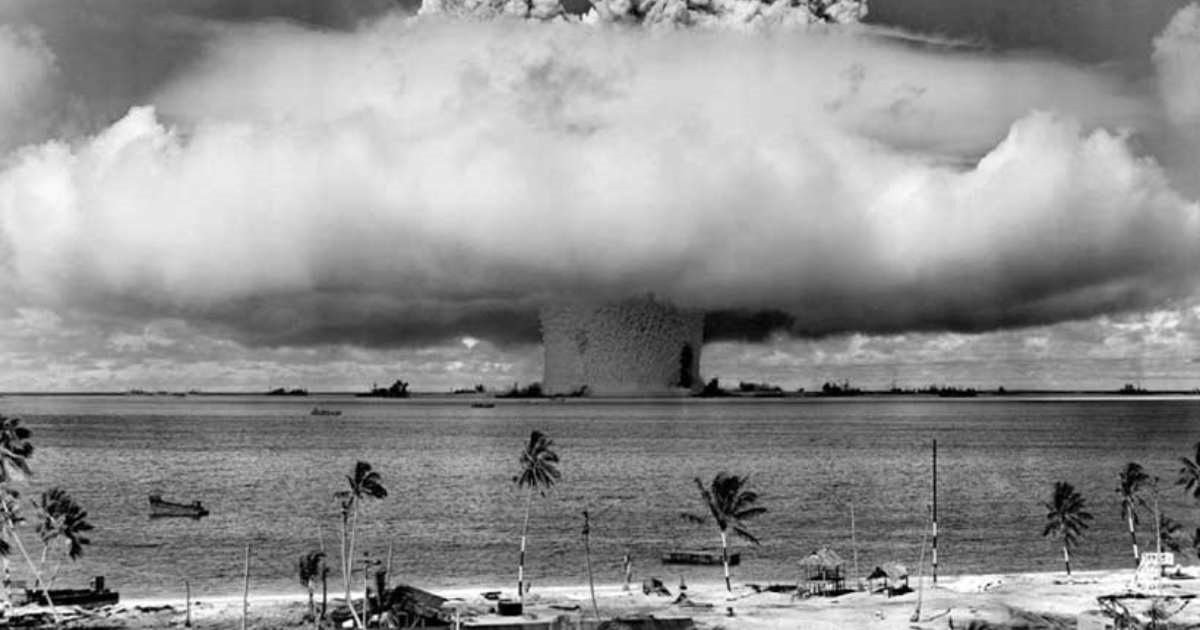In 1945, when the US dropped a uranium bomb on Hiroshima during World War II, and simultaneously a larger plutonium bomb over Nagasaki three days later, the world shook. Estimated deaths of 140,000 and 74,000, respectively, were reported along with an increased rate of cancer and chronic illness among survivors. It’s not like the world had never seen wars or conflicts, but it had never seen something so drastic.
Thus, the United Nations proposed the Treaty on the Non-Proliferation of Nuclear Weapons (NPT) to prevent the spread of nuclear weapons and promote peaceful nuclear energy use.
What is the Treaty of Non-Proliferation of Nuclear Weapons (NPT)?
Signed in 1968, the Treaty of the Non-Proliferation of Nuclear Weapons (NPT) is one of the most important international agreements in modern history. It was enforced in 1970 as a result of the Cold War to stop the spread of nuclear weapons and ensure that nuclear technology is used only for peaceful purposes. The main objectives of the treaty include:
- Stop countries that don’t have nukes from building or buying them.
- Stop countries that already have them from helping others get them.
- Allow the nation to only use nuclear technology for energy, health, and research.
- Inspect regular inspections by the International Atomic Energy Agency (IAEA) to ensure that no one is secretly building weapons.
-
Ensuring that nuclear-armed countries work toward reducing and eventually eliminating their nuclear arsenals.
-
In the long term, create a world free of nuclear weapons.
191 nations throughout the world signed the treaty, including some of the biggest nuclear-armed nations in the world, like the United Stated, the United Kingdom, France, China and Russia. However some nuclear powers refused to sign it, including Israel, South Korea and two very familiar names: Pakistan and India.
Why did Pakistan and India refuse to sign the NPT?
Pakistan didn’t always want to refuse the treaty; in fact, for the longest time, it was enthusiastic about arms control and disarmament. But things changed quickly, and it changed its strategy and refused to sign the NPT. The main reason behind this shift was security. During the Sino-Indian War in 1962, USA’s aid to India despite the country’s non-alignment with the western bloc, created distrust and disappointment. Pakistan began to realise that the US might be a greater support to India than it was Pakistan.
This distrust was further solidified when India and the US signed a treaty under which the US supplied uranium to India’s Power Station, thus helping India in becoming a nuclear power. And when India tested its nuclear weapons, Pakistan viewed it as a subsequent rejection of proposals for a nuclear-weapon-free zone in South Asia.

On the other hand, India viewed the treaty as biased, dividing the world into ‘nuclear haves’ and ‘nuclear have-nots.’ Thus, the refusal of one country, either Pakistan or India, naturally put the other in a complicated position. Given the history of the two countries, neither could risk it.
Read More: “The Butcher of Gujarat Lives and He is the Prime Minister of India”: A Look at Modi and RSS History
Current Tensions and the Constant Nuclear Scare
As of 2025, India and Pakistan are once again on the brink of war. It’s not the first time the two nations are at a crossroads, threatening each other, promising a destruction the world would see. Considering that both nations are nuclear-armed, this threat becomes a lot more serious and rather scary for those who reside within the borders.
What if it comes down to it?
India and Pakistan have always been head-to-head when it came to nuclear weapons. They both became nuclear powers in 1998, and currently hold almost the same amount of nuclear arsenal.
Pakistan: Approximately 170 nuclear warheads
India: Approximately 175 nuclear warheads
While flaunting nuclear power might seem like a show of strength, history reminds us that the adrenaline rush is fleeting, and the consequences can last far longer. It took 30 years for Hiroshima and Nagasaki to fully recover because the radiation from the bombs contaminated the environment for decades.
Now, imagine for a second that India and Pakistan, in their rage, choose to take the nuclear path. What’s at stake? Densely populated cities like Delhi and Karachi might be the first target, and over 1 million people could be killed instantly. A Princeton simulation in 2020 predicted that if India and Pakistan used 100 nuclear weapons, there would be over 100 million deaths. Yes, let that sink in. Cities would be erased, be it Mumbai or Islamabad, significant rivers like the Indus and Ganga will be forever contaminated, fallout clouds will travel hundreds of kilometres a nuclear winter could even follow. Soot and smoke will block the sunlight, and crops worldwide will be affected, causing famine and food shortages.
It will no longer be a war between two nations; the entire world will be affected if it chooses to stay silent.
Is Nuclear Disarmament the Answer?
Yes. Nuclear weapons are built to scare enemies, but who is to guarantee that one will not use them? In World War II, the United States used it against Japan, and the world saw what followed. Robert J. Oppenheimer, the father of the nuclear bomb, stated, after seeing the horrifying consequences of his doing,
“Now I am become Death, the destroyer of worlds.”
The quote highlights the destruction of the bomb and the profound realisation that followed, a little too late.
Before India and Pakistan suffer the same realisation, it’s about time the two sign the Treaty of the Non- Non-Proliferation of Nuclear Weapons and follow suit.
Stay tuned to Brandsynario for the latest news and updates







































![India, Pakistan, and the Path Toward Nuclear Disarmament] India, Pakistan, and the Path Toward Nuclear Disarmament](https://www.brandsynario.com/wp-content/uploads/2025/05/India-Pakistan-and-the-Path-Toward-Nuclear-Disarmament-copy1-696x365.jpg)